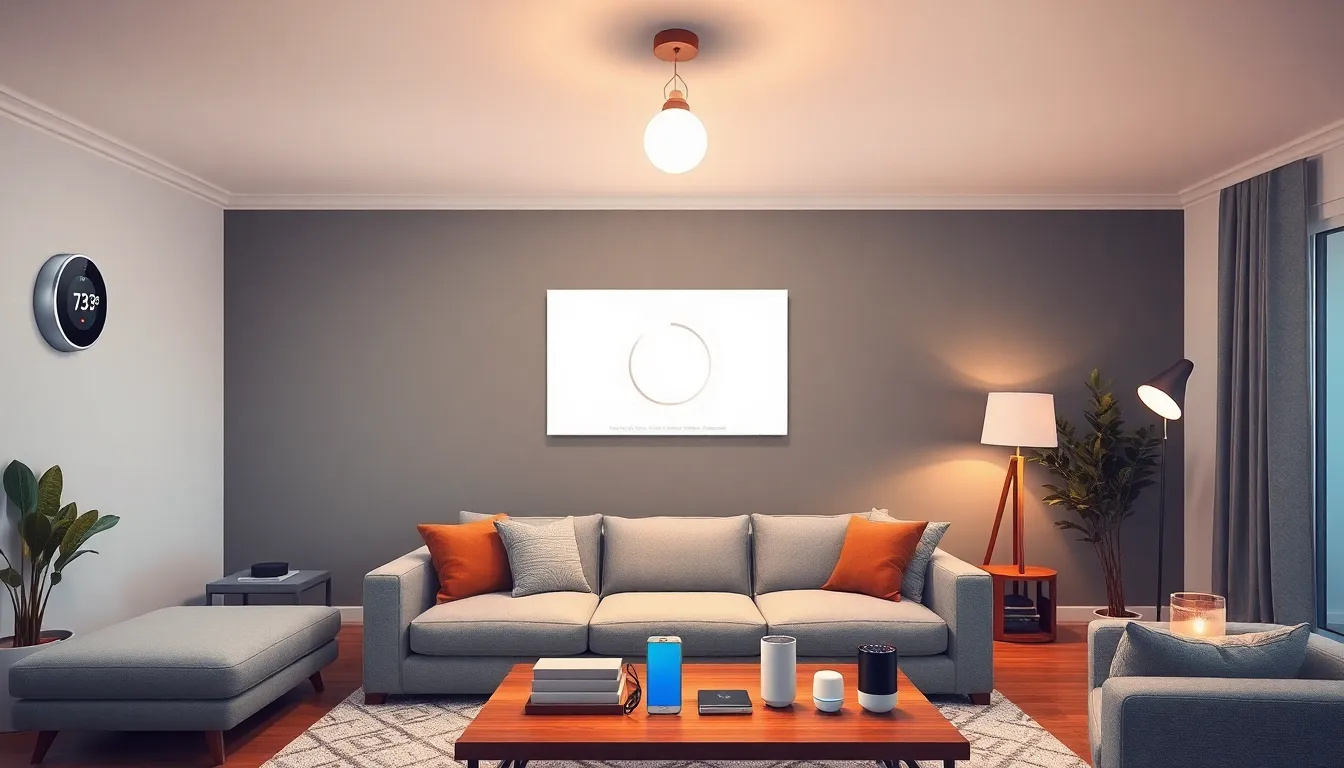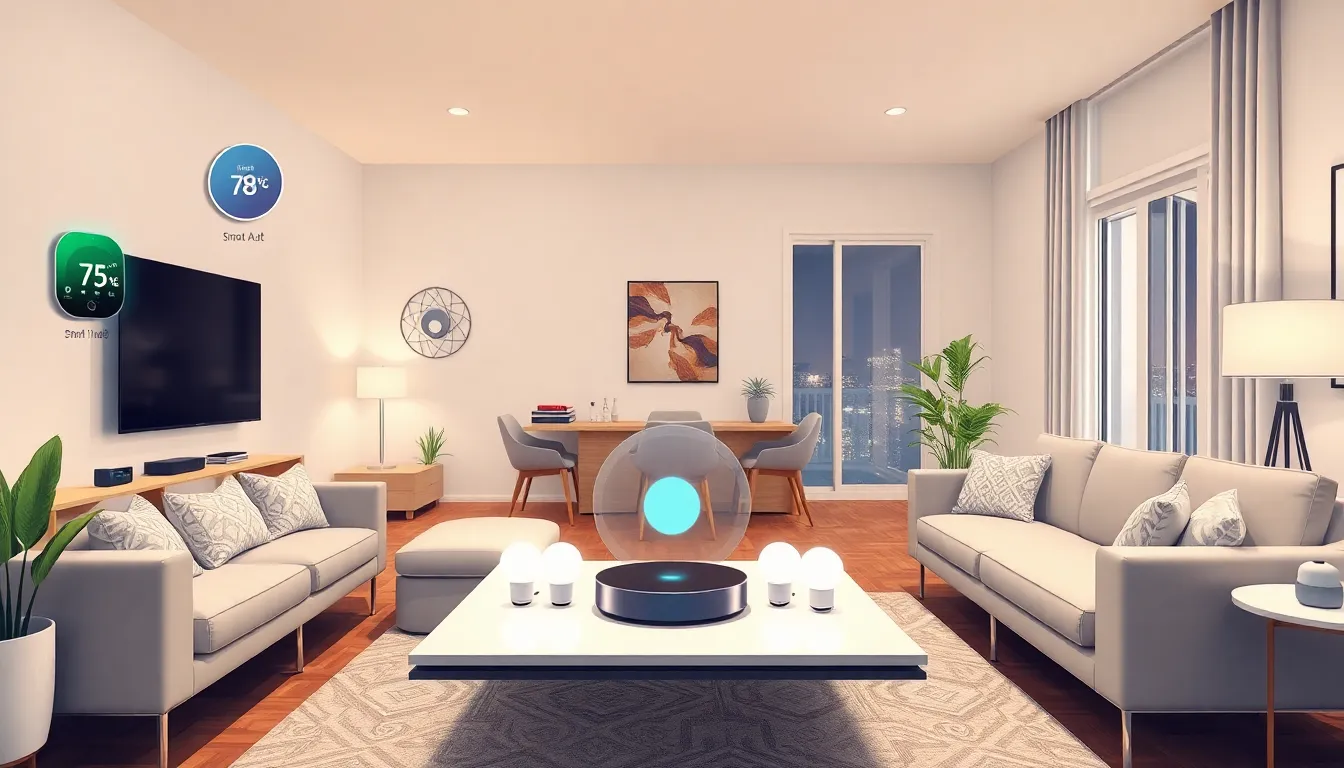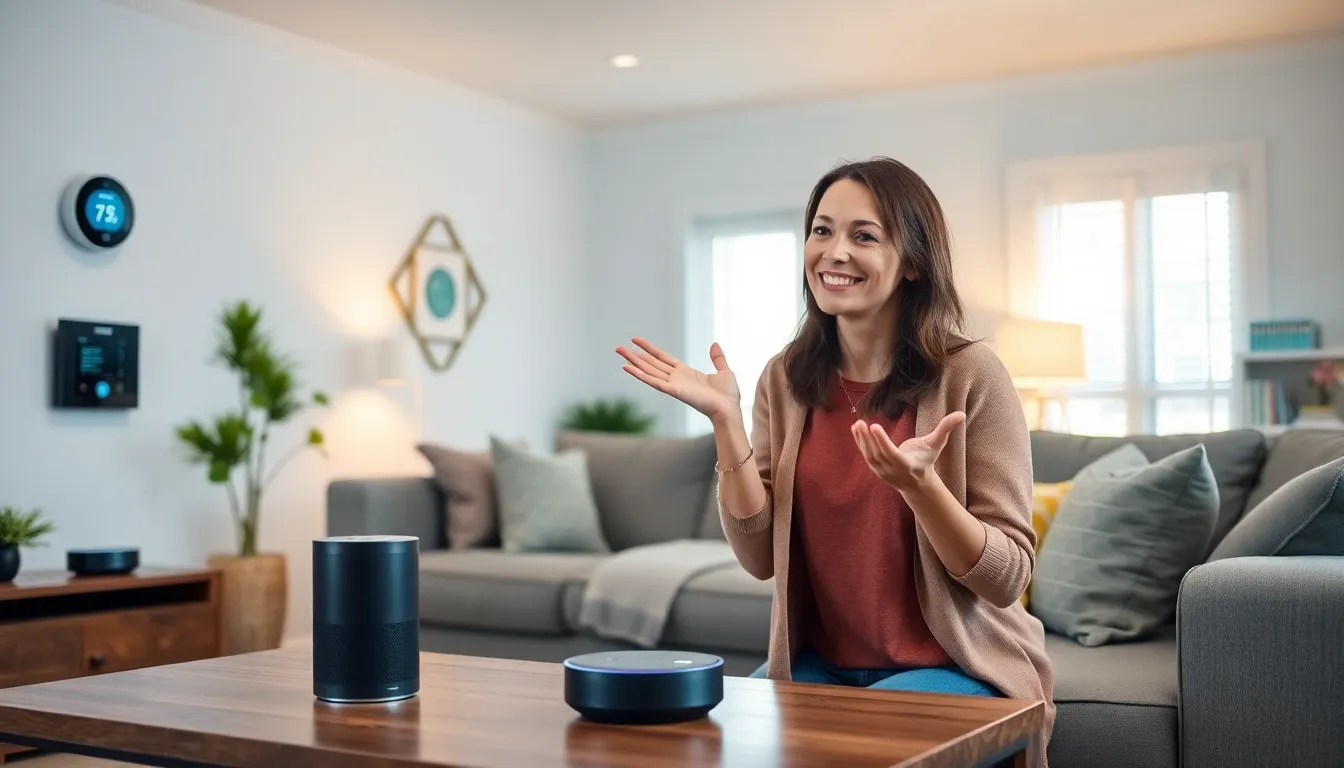Imagine walking into your home and having the lights turn on, the thermostat adjust, and your favorite playlist start playing—all without lifting a finger. Welcome to the world of Wi-Fi home automation, where your house transforms into a smart haven. It’s like having a personal butler, minus the bow tie and the awkward small talk.
In today’s fast-paced life, who wouldn’t want to simplify daily tasks? With Wi-Fi home automation, he can control everything from his coffee maker to security cameras with just a tap on his phone. It’s not just convenient; it’s also a chance to impress friends and family with your tech-savvy lifestyle. So, buckle up and get ready to explore how Wi-Fi home automation can turn any ordinary house into a futuristic dream home. After all, who wouldn’t want a home that listens?
Table of Contents
ToggleOverview of Wi-Fi Home Automation
Wi-Fi home automation enables users to control various devices through wireless internet connections. This technology allows seamless management of everything from lighting to heating systems, improving daily convenience and efficiency. Connected devices respond quickly to user commands, which enhances the overall experience of home living.
Smart bulbs, for instance, allow users to adjust brightness levels with a smartphone app or voice commands. Security cameras, another example, provide real-time monitoring and alerts directly to devices. These advancements introduce a high level of control that extends beyond basic functions.
Automation systems integrate with virtual assistants, enabling voice commands for hands-free operations. Integration with existing Wi-Fi networks fosters flexibility and eliminates the need for specialized hubs. Devices act independently or interactively, depending on user preferences and programming.
Furthermore, remote access permits users to manage their systems from anywhere. This capability ensures that heating or lighting adjustments can occur while away from home. Overall energy management benefits significantly, as users gain insights into power consumption.
Many brands offer Wi-Fi-compatible devices, which enables users to select products that suit their needs. Popular ecosystems support a wide range of smart home technologies, enhancing compatibility among devices. Strong Wi-Fi signals become crucial for optimal functioning, ensuring devices communicate effectively.
Customization options provide users the ability to create personalized automation routines. Scheduling tasks, such as pre-setting lighting for specific times, adds convenience. These smart solutions not only save time but also contribute to a modern lifestyle that reflects technological advancements.
Benefits of Wi-Fi Home Automation


Wi-Fi home automation offers numerous advantages, simplifying everyday tasks and enhancing the home environment.
Convenience and Control
Control of smart devices through a single app saves time and effort. Users manage everything from lights to thermostats without multiple remotes. Accessing home systems from anywhere with a smartphone brings peace of mind. Compatibility with virtual assistants like Amazon Alexa or Google Assistant enables voice control for added ease. Scheduling tasks, such as turning lights on and off automatically, enhances daily routines. Alerts and notifications keep homeowners informed about security or energy usage. Overall, the convenience of Wi-Fi automation transforms ordinary living into a smarter lifestyle.
Energy Efficiency
Connected devices contribute to significant energy savings. Smart thermostats adjust temperatures based on occupancy, optimizing heating and cooling. Lighting systems employ smart bulbs that reduce energy consumption by allowing users to set timers. Data from energy usage patterns helps homeowners make informed decisions. Remote control over devices ensures that appliances can be turned off when not in use. Monitoring systems provide insights into how energy is utilized throughout the home. With these strategies, users effectively lower utility bills and minimize their environmental impact.
Key Components of Wi-Fi Home Automation
Wi-Fi home automation relies on several key components that enhance functionality and user experience. Smart devices form the backbone of this system, while hubs ensure connectivity and communication.
Smart Devices
Smart devices play a crucial role in Wi-Fi home automation. Options include smart bulbs, thermostats, cameras, and locks. These devices connect to the local Wi-Fi network, enabling remote control through an app or voice commands. Users can adjust lighting, monitor security, or modify temperature settings from anywhere. For example, smart thermostats learn user preferences and optimize heating and cooling, which boosts energy efficiency. In addition, brands consistently introduce new smart devices, making it easier to find suitable options for any household.
Hub and Connectivity
A hub acts as the central point that manages communication between devices. It connects various smart devices, regardless of brand, allowing seamless integration. Common hubs support protocols like Zigbee and Z-Wave in addition to Wi-Fi, ensuring compatibility across devices. Users benefit from enhanced control, as all devices can be accessed through a single interface. Moreover, connectivity stability is key; Wi-Fi networks with strong signals minimize disruptions, allowing actions to be executed without delays. Hubs also facilitate automation routines, triggering multiple devices simultaneously based on user preferences.
Popular Wi-Fi Home Automation Systems
Wi-Fi home automation systems offer users diverse options to enhance their smart living experience. Several brands provide reliable solutions that cater to various needs and preferences.
System Comparisons
Smart home systems differ in functionality, compatibility, and features. For instance, Google Nest integrates seamlessly with Google Assistant devices, while Amazon’s Echo line works best with Alexa. Samsung SmartThings supports a wider range of third-party devices, providing flexibility in choosing smart products. User interfaces also vary; some systems focus on simple app navigation, whereas others enhance automation capability with advanced settings. Researching specific systems helps potential users determine which set of features aligns with their lifestyle.
User Experiences
User experiences reflect satisfaction with smart home automation‘s convenience and control. Many individuals report that controlling lights, thermostats, and security cameras from a smartphone streamlines daily tasks. Features like voice commands engage users, making smart systems feel intuitive. Positive testimonials highlight energy savings obtained through smart thermostats and bulbs. Users appreciate having the ability to schedule tasks or receive alerts regarding security. The reliability of connections also contributes to overall satisfaction, as a strong Wi-Fi signal ensures efficient operation.
Embracing Wi-Fi home automation opens the door to a smarter and more efficient living environment. With the ability to control devices effortlessly from a smartphone users can enjoy enhanced convenience and energy savings. The integration of smart devices and hubs fosters seamless communication and control throughout the home.
As technology continues to evolve the range of available devices and systems will only expand. This presents endless possibilities for customization and personalization. By investing in Wi-Fi home automation homeowners not only elevate their living experience but also showcase their modern lifestyle to friends and family. The future of home living is here and it’s time to take the plunge into a connected world.





